Nailing down some English Diaspora Tales in Corby: November 25th/ 30th
Many Scots-born live at home in England today ... some 800,000 at a recent count ... and there are many many more descendants ....
So, where to start to tell a diaspora story, and can it hope to be truly repesentative?
Well, the first part of the question has a straightforward answer: it has to start with Corby! So the research team has been in Corby meeting and talking Scotland. This week is the third visitation! And the story is always the same: virtually all Scots migration occured in two great waves in the 1930s and the 1950s. Scots came as a result of quite deliberate recruiting campaigns in Aberdeen and Glasgow by Stewart and Lloyds, the town's steel masters. The offer was well paid work and a home within months - rather than the normal five years on a Waiting List. To those from the hard hit fishing industry in Aberdeen [and this was before the oil boom years] or from declining industry in Glasgow, it was a tempting offer.
'The men came south for the first six months, many sleeping rough in the hedgerows and taking the Robin Hood coach back home at long weekends. As soon as they'd got their new home the family joined them. In 1951 Corby was designated a New Town and, whilst much of the old town was soon unceremonially demolished, new built homes arrived on a grand scale. And the town's famous steel works originally built around the ample supplies of Northamptonshire ironstone flourished greatly until international competition led to closure and mass unemployment at the end of the 1970s.'
It was in the 1970s that the Scots built themselves a co-operative club, The Grampian they call it in recognition of their origins. It has a massive membership of local Scots and their families. The food is so good and the beer so reasonably priced that many an Irishman from the St. Patrick's Club next door sneaks in too.
This third Visit to Corby must make decisions and sign up volunteer stitchers
The Grampian is a hive of activity: on the first day of this November visits at the Club there was a fine carvery lunch, a children's disco and pipe band practice. Later in the week there's Scottish Dancing, the Burns Club and a Stitchers Group. For fine weather there are several bowling greens outside. They also sponsor Corby's local Radio on 108 so it was not difficult to create awareness of the project in hand - the Scottish Diaspora Tapestry itself! And the local Northamptonshire Telegraph gave our camapign front page precedence over the newly elected MP who replaced Louise Mensch last week.
Setting up began at 7am once the previous evening's celebrations had been tidied up ... and those concerned were regaled with a bacon sandwich by 10 am!
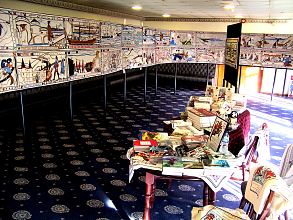 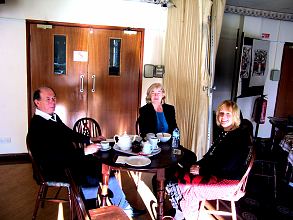
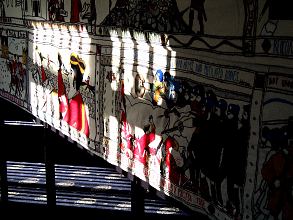 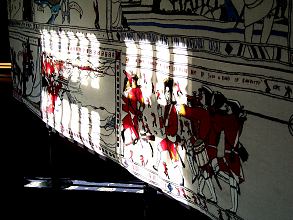
November 25th/ 30th, including St Andrew's night which will be our finale, is decision time, and to raise the tempo this time and to sponsor the requisite awareness of our Diaspora project, the Battle of Prestonpans Tapestry has been brought along too. The exhibition not only gives Scots in Corby and more the chance to see what our first great Pans tapestry looks like. It's also an appetiser for potential stitcher volunteers. And that's certainly working! Upwards of a dozen stitchers and group members have already expressed interest - serious movers and shakers ready to deliver. School groups are coming too ...
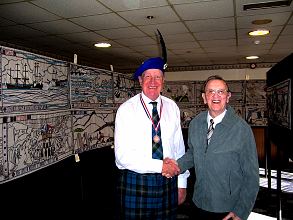 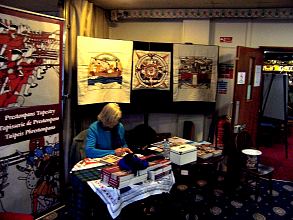
Not surprisingly the half dozen 500mm x 500mm panel storylines are taking final shape ... steel makers of course and the Grampian Club, St Andrew's Church and its community activities, the Highland Games and myriad cultural activities, Studio 41 and Corby Music, DDay's PLUTO pipeline, Scots porrige eating and the Corby crater on Mars, the largest haggis in the world and deep fried mince pies! Steelmen are determined that 'their' panel must have molten steel being poured from a ladel with sparks flying ... and there's a local octogenarian historian, remembrancer and still the personification of so many things Scottish, John Douglas [above left].
And our research continues with distinguished local historian and archivist Peter Hill and Heritage Centre Fellow Billy Dalziel ....
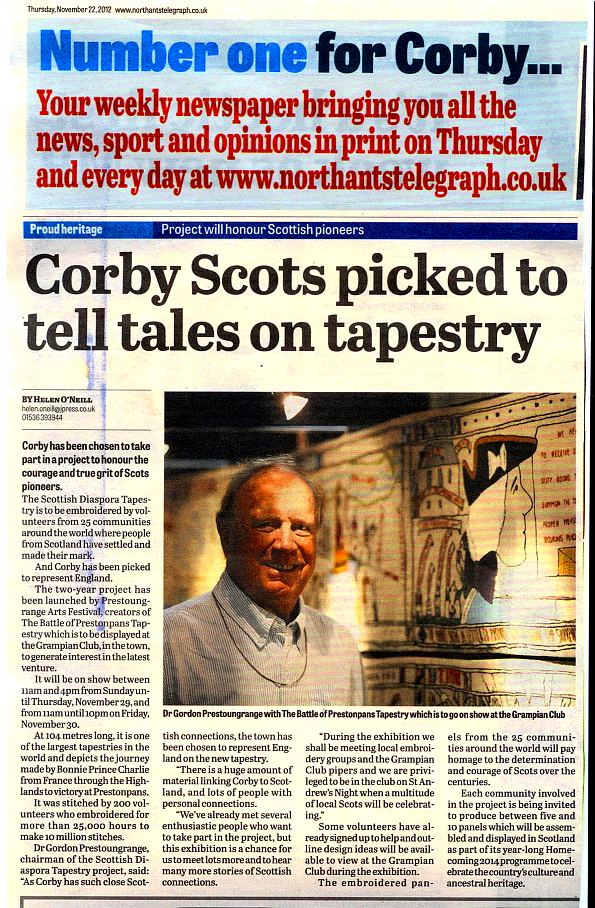
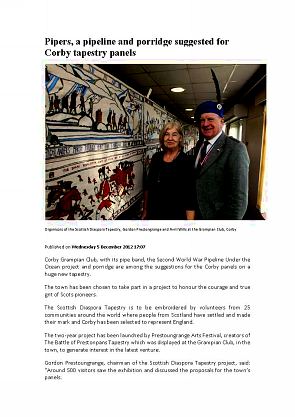 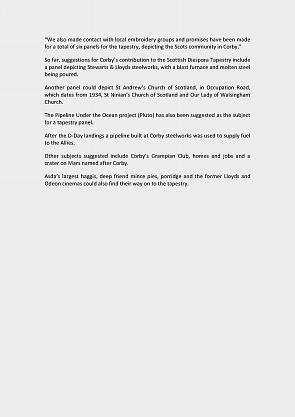
Published Date: November 28th 2012
|





